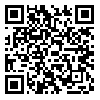Volume 7, Issue 2 (June 2020)
Health Spiritual Med Ethics 2020, 7(2): 1-1 |
Back to browse issues page
Download citation:
BibTeX | RIS | EndNote | Medlars | ProCite | Reference Manager | RefWorks
Send citation to:



BibTeX | RIS | EndNote | Medlars | ProCite | Reference Manager | RefWorks
Send citation to:
Heidari A, Heidari M. Spirituality in Medical Education: Formal or Hidden Curriculum?. Health Spiritual Med Ethics 2020; 7 (2) :1-1
URL: http://jhsme.muq.ac.ir/article-1-383-en.html
URL: http://jhsme.muq.ac.ir/article-1-383-en.html
1- 1 Spiritual Health Research Center, Qom University of Medical Sciences, Qom, Iran., Faculty of Heath and Religion, 20th alley, Amin Boulevard, Qom, Iranon
2- Spiritual Health Research Center, Qom University of Medical Sciences, Qom, Iran. ,mortezaheidari.mh@gmail.com
2- Spiritual Health Research Center, Qom University of Medical Sciences, Qom, Iran. ,
Abstract: (3524 Views)
| M |
Determining the appropriate educational strategies in this field depends on a clear explanation of the aims and purposes of addressing spirituality in medical education. These aims could be classified in different levels, the minimum level being an overall perception of non-physical dimensions of human being. Nevertheless, the ultimate goal of incorporating spirituality in medical education according to the authors can be stated as a shift from the narrow biomedical paradigm to a deepened and strengthened holistic view among the health care potential workers, with special attention to Spirit as a truth composing a main part of his existence. It is believed that this recognition, followed by a comprehensive understanding of man and his diverse needs, leads to improvement in healthcare system and transcendence of health in human communities. In this way, addressing spirituality in medical education should be regarded paradigmatically, influencing many fundamentals of knowledge, attitude, and behavior. In other words, spirituality should be covered in medical curricula to convey a thorough knowledge of human being (5). It should be noted that during medical education, apart from technical knowledge and skills, a set of character traits and a kind of professional identity are formed, not only as a result of textbooks and educational materials, but through implicit and indirect messages conveyed within the atmosphere of education. These messages mainly focus on cultural customs, values, norms, social and behavioral expectations and tendencies, encompassing the concept of hidden curriculum in which, in addition to the content of the message, the sender, the environment and the way the message is exchanged are of particular importance (6). Hidden curriculum provides a capacity for transmission of messages beyond curriculum, which can be means of better training and finally better performance. Hidden curriculum, influenced by the organizational culture and especially role models, may be contrary to formal curriculum and the explicit educational goals. This is especially significant in clinical stages of medical education in which the actions of professors and others whose behavior is accepted as reference, accompanied by the overall atmosphere of the educational settings play a major role.
It seems that to teach spirituality with the above-mentioned goals, it is necessary to take advantage from the capacity of hidden curriculum (7). Firstly, because it can be helpful in preventing against the negative consequences of what is implicitly taught in educational contexts, and secondly, to prepare the ground for utilizing it to develop and strengthen these competencies and meet existing challenges in areas such as medical ethics, professionalism, social accountability, and integrity. So, despite acknowledging spirituality and especially spiritual care as a part of formal curriculum, it seems that the effect of hidden curriculum is clearly greater on this dimension of health compared with other aspects of health. Although hidden curriculum exerts its effects in an implicit and at times unintended manner, targeted and planned interventions can lead to desirable effect on the learners. So it is recommended to consider spirituality in different levels from policy-making to planning, implementation and evaluation.
Type of Study: LETTER TO THE EDITOR |
Subject:
Special
Received: 2020/06/7 | Accepted: 2020/06/22 | Published: 2020/06/30
Received: 2020/06/7 | Accepted: 2020/06/22 | Published: 2020/06/30
References
1. Get persistent links for your reference list or bibliography.
Copy and paste the list, we’ll match with our metadata and return the links.
Members may also deposit reference lists here too.
References
2. Holden M, Buck E, Clark M, Szauter K, Trumble J, editors. Professional identity formation in medical education: the convergence of multiple domains. HEC forum; 2012: Springer. [DOI:10.1007/s10730-012-9197-6]
3. Heidari M, Abbaspour A, Rahimian H, Heidari A. Challenges of Developing Religious Competencies in Medical Education in Iran: A Qualitative Study. Health, Spirituality and Medical Ethics. 2019;6(3):44-52. [DOI:10.29252/jhsme.6.3.44]
4. Lucchetti G, Gonçalves LM, de Carvalho Ferreira AG, Daher JC, Lucchetti ALG. Incorporating and Teaching Spirituality into Medical Education: An Overview of the Field and Possible Educational Strategies. Spirituality, Religiousness and Health: Springer; 2019. p. 249-65. [DOI:10.1007/978-3-030-21221-6_15]
5. Cantillon P, Wood DF, Yardley S. ABC of learning and teaching in medicine: John Wiley & Sons; 2017.
6. Memaryan N, Rassouli M, Nahardani SZ, Amiri P. Integration of spirituality in medical education in Iran: A qualitative exploration of requirements. Evidence-Based Complementary and Alternative Medicine. 2015;2015. [DOI:10.1155/2015/793085]
7. Andarvazh MR, Afshar L, Yazdani S. Hidden curriculum: An analytical definition. Journal of Medical Education. 2017;16(4):198-207.
8. LoboPrabhu S, Lomax J. The role of spirituality in medical school and psychiatry residency education. International Journal of Applied Psychoanalytic Studies. 2010;7(2):180-92. [DOI:10.1002/aps.241]
Send email to the article author
| Rights and permissions | |
 |
This work is licensed under a Creative Commons Attribution-NonCommercial 4.0 International License. |









